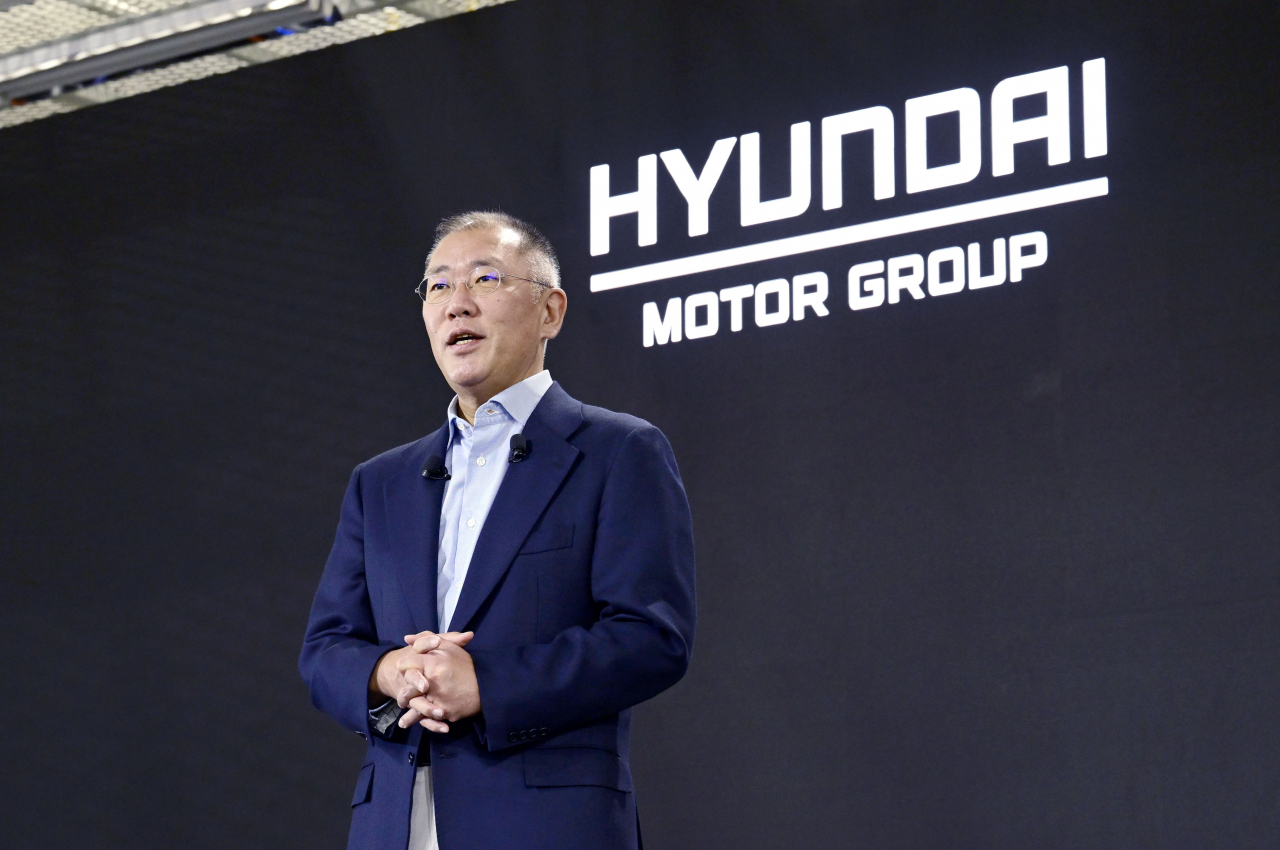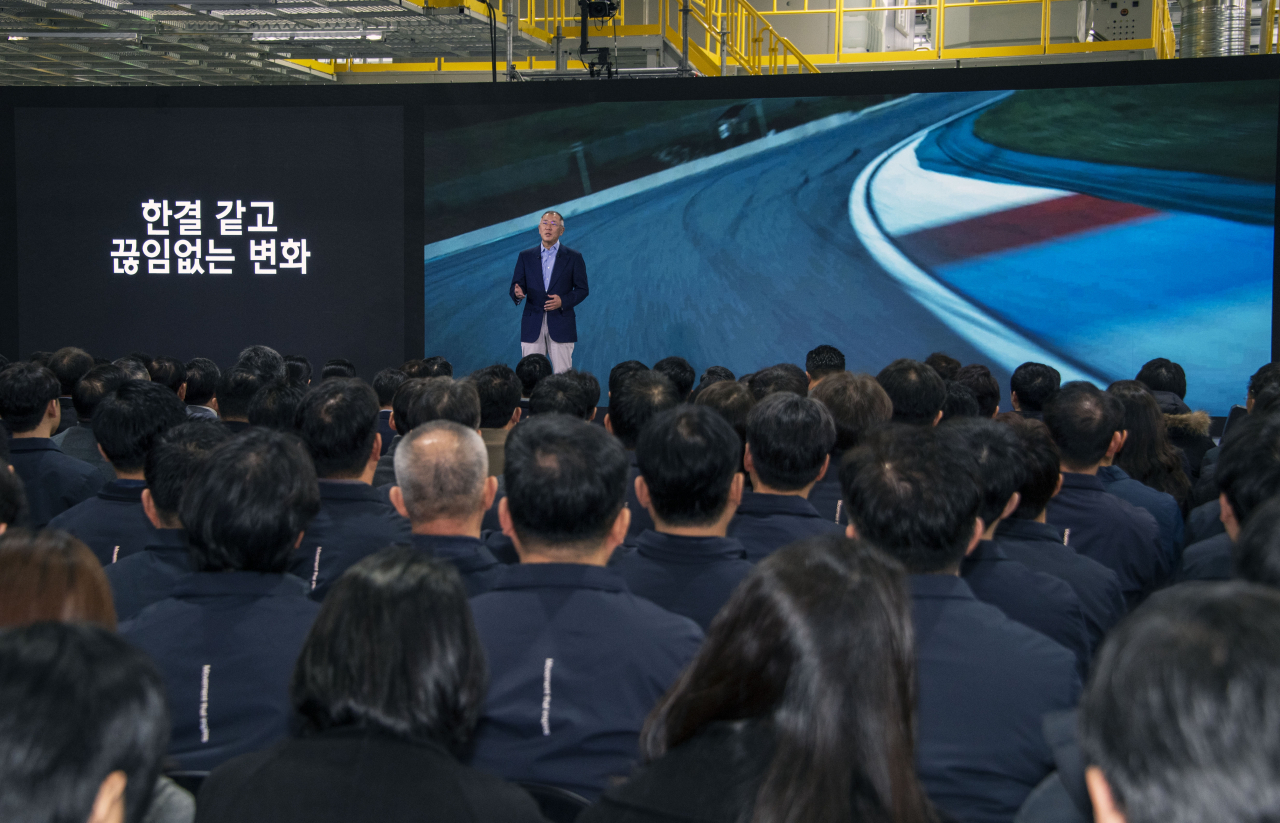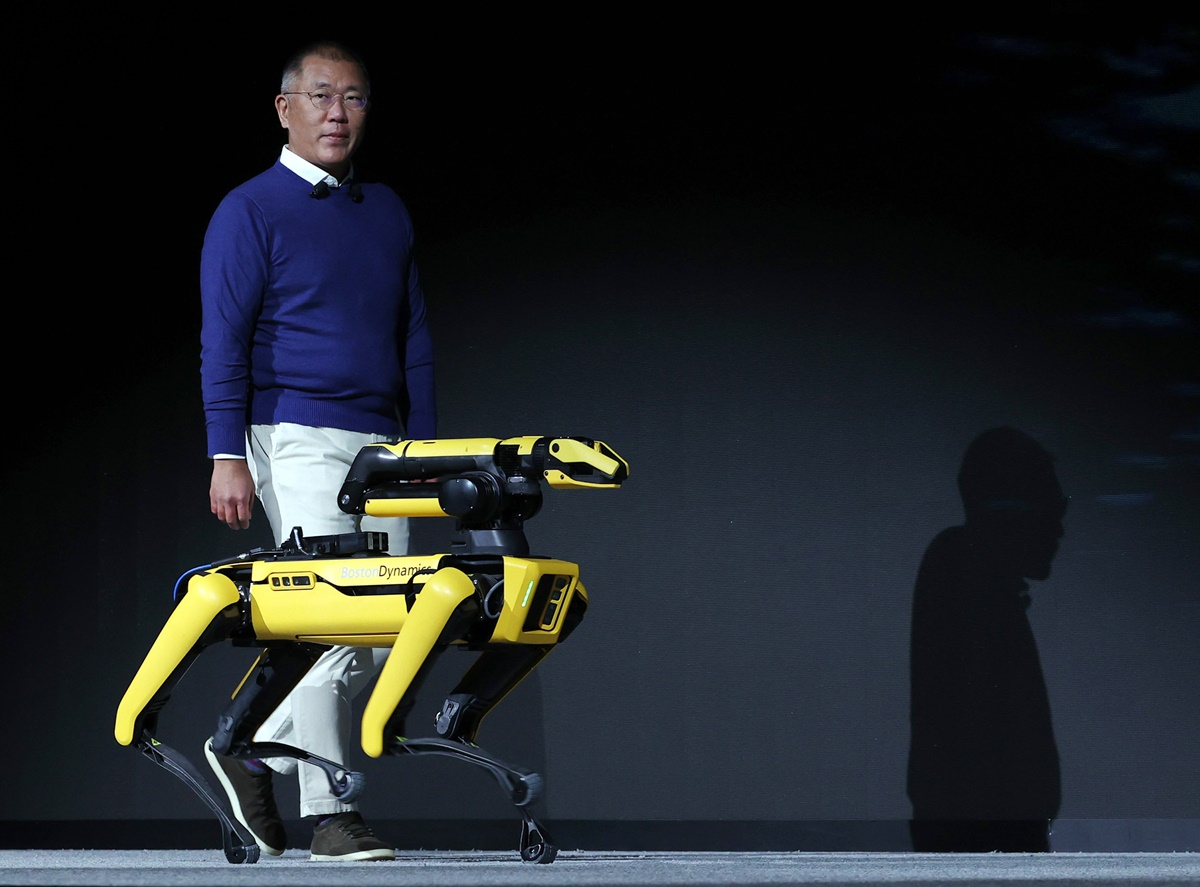
 |
| Hyundai Motor Group Executive Chair Chung Euisun delivers his New Year's address at Kia AutoLand Gwangmyeong, Korea's first EV-only car plant, in Gyeonggi Province in January this year. (Hyundai Motor Group) |
Hyundai Motor Group is celebrating four years of Chung Euisun’s leadership as executive chair on Monday. During this period, the automaker has experienced rapid growth, expanded into new markets and positioned itself as a major player in electric vehicles and future technologies. But new challenges lie ahead, particularly in software, robotics and urban air mobility.
When Chung officially took over in 2020, Hyundai and its sister brand, Kia, were solid players but not exactly leaders in the global automotive market. In just a few years, the group has climbed to become the world’s third-largest automaker by sales, overtaking giants like General Motors.
 |
| Chung addresses employees during his New Year's speech at Kia AutoLand Gwangmyeong in January this year. (Hyundai Motor Group) |
By the end of 2022, Hyundai-Kia had sold 7.3 million vehicles -- almost a million more than in 2020 -- and they’ve held onto that third-place spot in 2023. With 5.39 million units sold in the first nine months of this year, they’re on track to hit around 7 million vehicles again by year’s end, inching closer to Volkswagen’s second-place position.
Beyond sales, Hyundai’s profitability has surged. Hyundai Motor’s operating profit soared from 239 billion won ($177 million) in 2020 to 15.1 trillion in 2022, while Kia’s profits jumped 2.7 trillion to 11.6 trillion won in the same period. This year, the group’s revenue is forecast to hit 280 trillion won, with operating profits of 29 trillion -- both all-time highs. With profit margins above 10 percent, Hyundai-Kia has positioned itself alongside premium brands.
 |
| Chung (second from left) mingles with the crew at Hyundai's Czech plant, getting a firsthand look at car production this September. (Hyundai Motor Group) |
Hyundai has transformed from a follower in traditional internal combustion engines to a leader in EVs. A key step was the introduction of its dedicated E-GMP platform in December 2020, which powers key models like the Ioniq 5 and Kia EV6. Even during recent market slowdowns in EV demand, the Group balanced hybrid production with EV development, keeping its long-term strategy intact.
This strategy has paid off. Hyundai-Kia is now the second-largest EV maker in the US, surpassing General Motors and Ford. The group is set to expand further with the opening of Hyundai Metaplant America in Georgia later this year, followed by a new EV facility in Ulsan, South Korea in 2025.
Hyundai’s growing influence has also drawn the attention of governments worldwide. “Local governments are eager to attract Hyundai plants, as they can drive significant economic benefits,” a Korean industry insider noted.
 |
| At a town hall meeting at Hyundai Motor India's new Delhi headquarters in April, Chung (second from right) engages with questions posed by local employees. |
Despite its success in electrification, Hyundai faces tough challenges in software-defined vehicles and autonomous driving -- technologies increasingly shaping the future of mobility. Unlike traditional cars, SDVs depend on software updates and connectivity, and Hyundai is working hard to catch up with leaders like Tesla.
The company has invested heavily in this area. It set up Motional, a joint venture with Aptiv, to develop self-driving technology, and acquired Korean software startup 42dot. This year, Hyundai committed 3 trillion won to Motional and allocated 1 trillion to further develop SDV technology through 42dot.
Motional also plans to supply Ioniq 5 vehicles to Waymo, Google’s autonomous driving unit, and Hyundai aims to roll out an SDV prototype by 2026. However, progress has been slow, and Hyundai acknowledges it still trails behind Tesla and Chinese automakers in this field.
Hyundai is betting big on robotics and UAM as part of its long-term vision. By 2030, the Group aims to generate 50 percent of its revenue from cars, 30 percent from UAM, and 20 percent from robotics.
 |
| Chung presents Spot, a four-legged robot, during a press event at the Mandalay Bay Hotel in Las Vegas, Nevada, in January 2022. (Hyundai Motor Group) |
Chung’s first major acquisition was Boston Dynamics, a US robotics company known for its agile robots like Spot. However, the firm has struggled financially, posting a 196.9 billion-won loss in the first half of 2023.
In UAM, Hyundai established Supernal to develop electric vertical takeoff and landing aircraft, with plans to launch services in the US by 2028. Although progress has been expensive -- Supernal reported a 52.6 billion won loss last year -- Hyundai is taking a cautious, safety-first approach.
“We’re building to commercial aircraft safety standards from the start. The market won’t open unless we meet these safety requirements,” said Shin Jae-won, head of Hyundai’s Advanced Air Mobility division, at CES 2024 in January this year.









